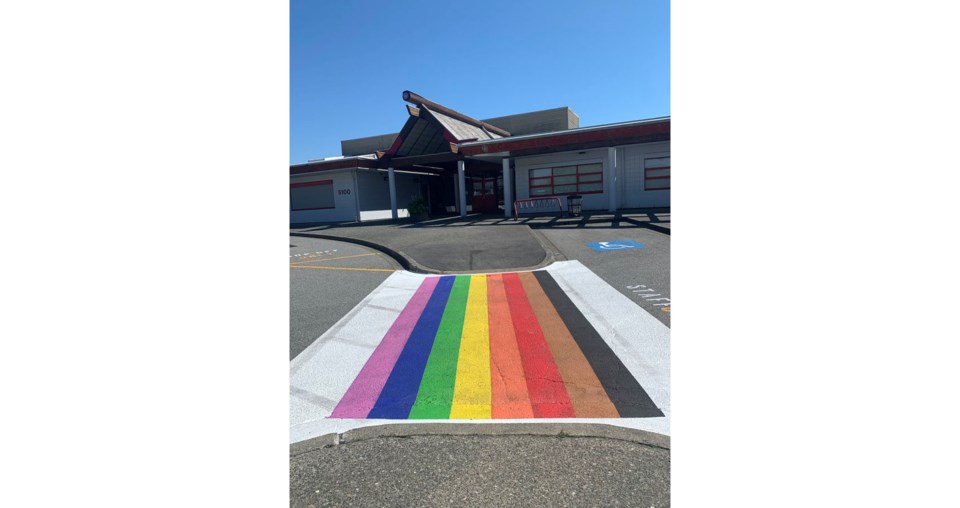The first rainbow crosswalk has been installed at a Richmond school – at Homma elementary – and another will soon be coming to MacNeill secondary.
Bryan Bone, a teacher at MacNeill secondary, said the rainbow crosswalk idea at his school was the result of brainstorming by the “Rainbow Club” to create a legacy project.
Statistics Canada finds that LGBTQ youth have high rates of poor mental health, homelessness, suicide, substance use, bullying, unemployment and abuse – something that concerned his students enough to push for the Rainbow Crosswalks, Bone said.
These issues are even higher for LGBTQ youth of colour, Bone noted, so the MacNeill rainbow crosswalk will include brown and black stripes.
“(My students) shared that welcoming staff, students, families and the community with a rainbow crosswalk sends a powerful message that our school is a safe space that celebrates diversity,” Bone explained. “Their hope is that, over time, this will benefit future generations of LGBTQ+ kids who won't have to live in fear at home or in the community.”
Rainbow crosswalks are school-based initiatives, explained school board chair Sandra Nixon. The school district’s Sexual Orientation and Gender Identity (SOGI) committee has developed a process and guidelines for schools that want to install them.
Nixon said she’s “thrilled” schools are taking the initiative to install rainbow crosswalks “as a clear and visible sign of welcome, support and inclusivity for all students, families and staff, in particular those who identify as 2SLGBT+.”
Bone said recent “troubling hateful aggression” towards the LGBTQ community in Richmond is a reminder that “we must continue to be on guard against prejudice and discrimination.”
At a recent drag queen storytime in Hamilton, Bone, in his character of Miss Gina Tonic, a group of protesters started heckling him and had signs with rainbow swastikas. The police were called, but also the participants formed a circle around him to protect him from the protesters.
“Symbols of love, as well as celebrations of diversity and inclusion are what our schools and communities need, not hatred and grossly outdated prejudices,” Bone said.



